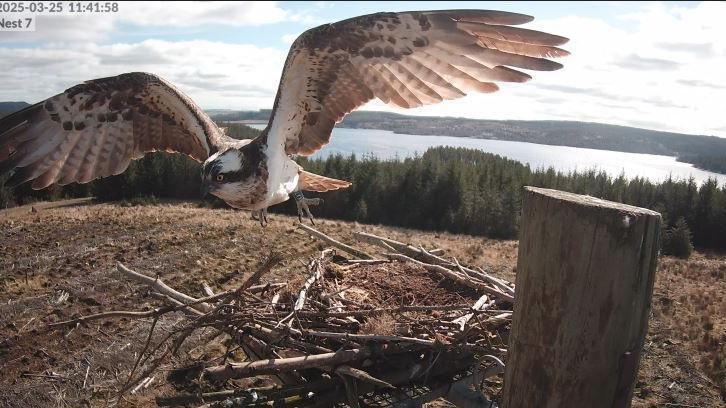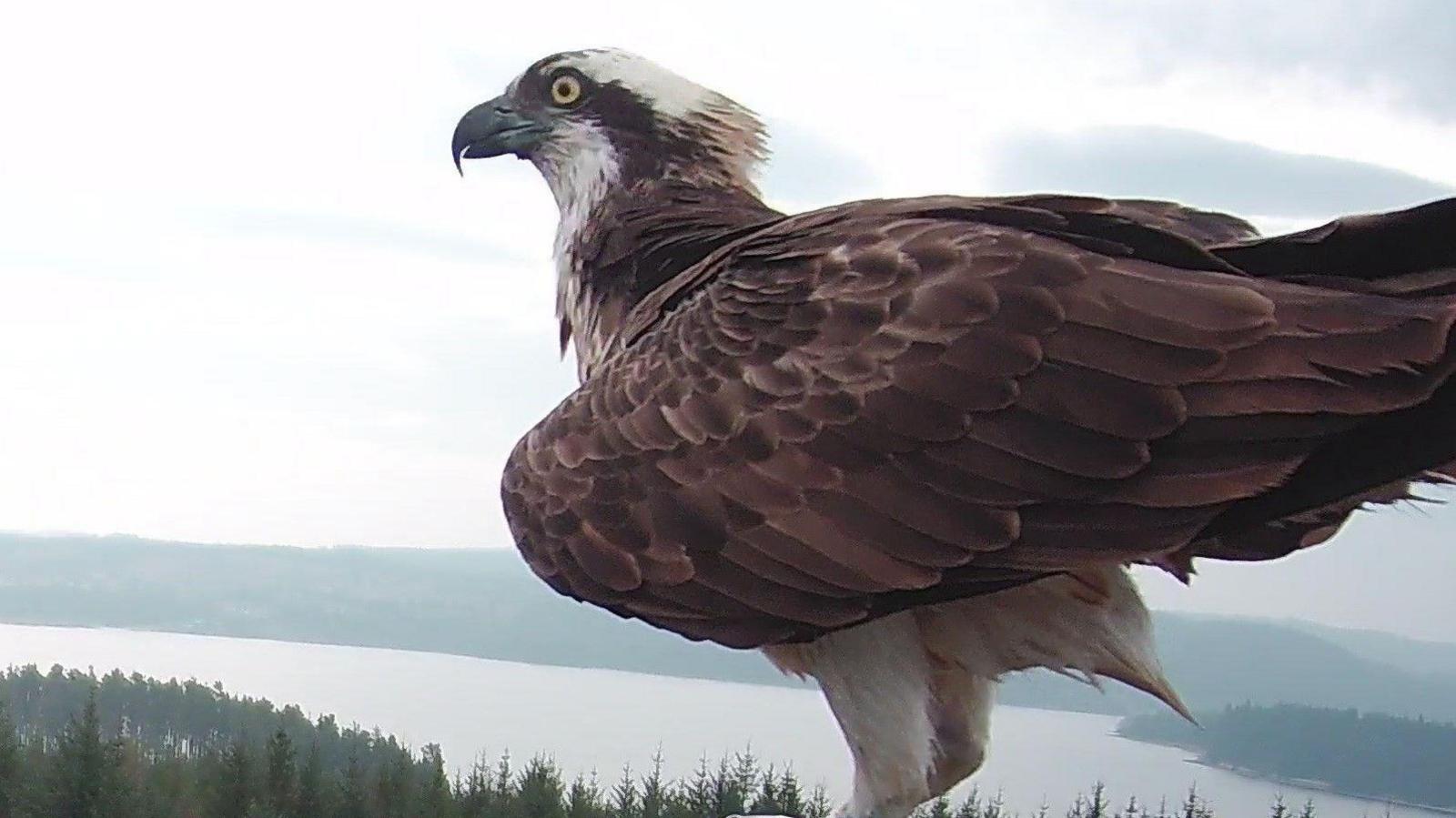Forest work begins ahead of birds' spring return

Ospreys bond for life and return to the same nest each season
- Published
Wildlife chiefs have begun work they hope will help set up a successful breeding season for returning ospreys after only a handful fledged at a forest site this year.
With the birds having now migrated to Africa for the winter, experts at Kielder, Northumberland, are already making preparations for spring.
The location's Osprey Watch cameras, which allow members of the public to see the birds in their nests, are being taken down, while the cutting back of nearby trees and repair of equipment is also scheduled to be undertaken.
Ecologist Tom Dearnley, of Forestry England, said there was "a lot of work over the winter" in order to create ideal conditions.
Once found throughout the UK, wild ospreys were persecuted and the species became extinct in England in 1847 and in Scotland in 1916.
However, in 2009 ospreys were born in Northumberland for the first time in more than 200 years, with more than 125 successfully fledging since then.
"We obviously can't approach the nests while they're occupied," Mr Dearnley explained, "so these months allow us to do so.
"Trees grow and they overtop nests occasionally, but ospreys like an open aspect so we have to cut some back.
"Our wildlife rangers are expert climbers and they'll be attending to different things and we'll have a drone up looking at the condition of surrounding trees.
"Winters can be brutal so we also take down the cameras and then put them back out in spring."

Ospreys have been a popular attraction at Kielder Forest in recent years
The first osprey to arrive this year was spotted on 21 March, but poor weather and the presence of other predators meant only six chicks survived.
That followed a tough year in 2024.
"The really vulnerable time is when eggs hatch and unfortunately we had quite cold, wet weather this year so the numbers have been lower than expected," Mr Dearnley said.
"The first year of migration is always really tough anyway because a bird is learning it for the first time."
The Osprey Watch scheme - a partnership between Forestry England and other organisations including Northumberland Wildlife Trust - allows the birds to be viewed around the clock on high-definition cameras.
There is also a dedicated viewing spot at one of the site's visitor centres while osprey-watching ferry tours run on the reservoir.
"They have dramatic habitat," Mr Dearnley said of the birds. "They dive for fish and are very visible.
"We can explain more about all the wildlife in our forest by using them as a focal point. It's a great species to engage with."
Follow BBC North East on X, external, Facebook, external, Nextdoor and Instagram, external.
Get in touch
Do you have a story suggestion for BBC Tyne?
Related topics
- Published24 August

- Published1 April

- Published28 June 2023